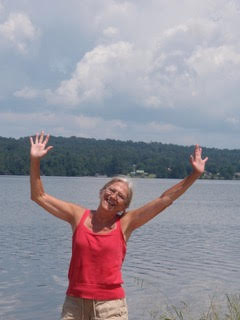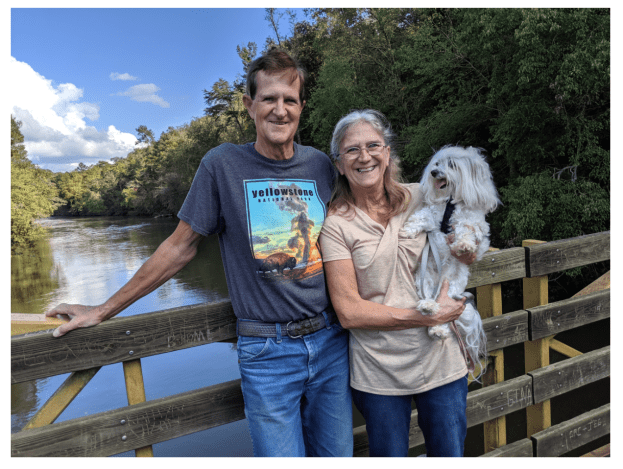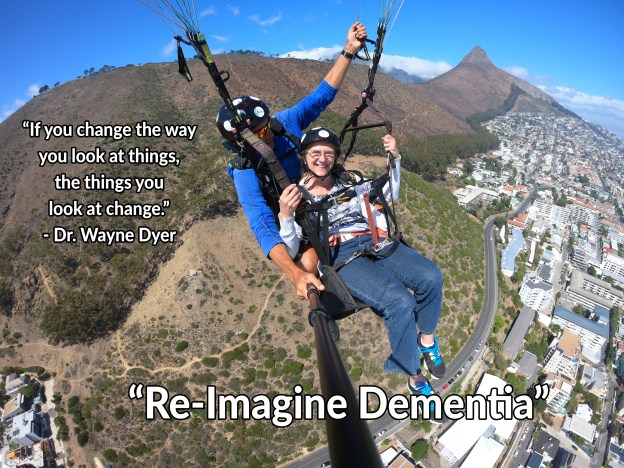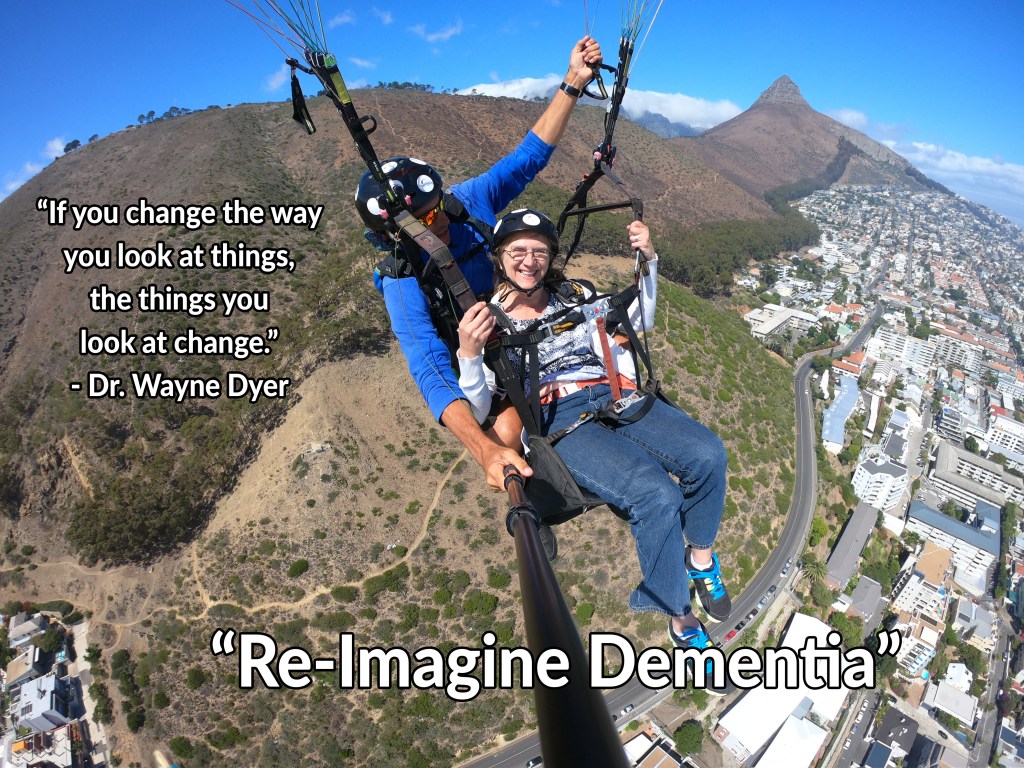PREPARATION: Plan ahead as much and as many things as possible! Get to a conference one day early when possible!
AIRLINE PREPARATION:
- When booking your airfare, opt-in for “Priority Boarding” when available.
- Passengers with Priority Boarding are allowed to board the plane as a separate group from most passengers, usually, the first or second group called to board.
- This may cost a few dollars more when you book your flight, but totally worth it to help reduce crowd-related anxiety and stress.
- Beginning TWO weeks before your flight, request Special Services from both the airline and TSA (the airline website may say one week – that doesn’t always work out).
- This is the single, biggest step you can take to make the airport experience easier.
- There are multiple ways to make this request (online form, email, phone call); USE THEM ALL.
- Be specific and explain how your symptoms make the airport difficult.
- Ex. “My dementia affects the way I measure distances in such a way that attempting to use escalators is hazardous.”
- Ex. “The symptoms of my dementia can cause me to easily get overwhelmed, confused, and disproportionately anxious in loud, busy, unfamiliar places.
- The airline will make note of your request, and when you check your luggage, the employee will confirm what exact type of assistance you need.
- At some airports, if you have a friend or loved one helping you, that person can get a pass that allows them to accompany you through TSA and all the way to the gate (that person will need to show I.D.). Check with the airline when you book your ticket or call TSA at that airport.
- If you are alone, it is STRONGLY ADVISABLE to request a wheelchair assist. A second airline employee will wheel you from the luggage check all the way to your gate, including assisting you through the TSA checkpoint.
- This is the single, biggest step you can take to make the airport experience easier.
PACKING:
- At least two weeks prior to travel:
- Start making a list of everything you will need (you will probably add things up until the day of travel)
- Put the list in some order (i.e. clothes, medications, etc.) There are apps available that can help you make and organize lists for example anylist.com.
- Highlight items to distinguish Check-In or Carry-On.
- Purchase Travel Bags
- When packing there are two tips to help avoid confusion when in a strange place. Pack by outfit not by garment type – one outfit together rather than all pants together.
- Pack each outfit in a separate travel bag (include undergarments, socks, etc.) – everything you need for that particular outfit. If you awake in the morning disoriented you will be thankful you don’t have to think about what to wear.
- Place each complete outfit on a hanger that you can place directly in your closet.
- Label the bag or hanger with when you are to wear it (i.e. Monday Day, Monday Night, etc.)
- When packing there are two tips to help avoid confusion when in a strange place. Pack by outfit not by garment type – one outfit together rather than all pants together.
- Medical Assistive Devices (such as a CPAP machine or Nebulizer) are not to be packed in your checked luggage.
- They are given a special tag, identifying it as a medical device.
- Items with a medical device tag do not count toward your carry-on allowance.
- Medication is suggested to be added to your carry-on with a large enough supply to cover up to four days. If your luggage is lost, it could take some time to get medications filled.
- Ear Plugs and/or headsets in your carry-on are extremely important to reduce noise and confusion.
- Start making a list of everything you will need (you will probably add things up until the day of travel)
- Once you are sure all your wash is done and you are ready to start packing
- Check mark items off your list as you put them in the luggage.
- Keep your list and on the return trip check off items as they go back into your suitcase to make sure you are not leaving anything behind. Weigh your luggage and make sure you are within airline guidelines.
- Identification, tickets, and “Please be patient with me I have dementia” cards should be kept where they are readily accessible. Consider a pouch that hangs around your neck and shoulder. It is easy to misplace this info when being herded through security.
- You will need to show your I.D. and ticket at least twice (some airports three times). Once when checking in, then when going through TSA and some airports require it also at boarding.
- Please Be Patient With Me I Have Dementia Cards – can really help you through the airline process and even on the plane. Use it.
- Consider also keeping a Care Partners Phone Number with your ID. If you get confused this can help others know how to help you.
- KEEP THESE HANDY UNTIL YOU ARE ON THE PLANE
AT THE AIRPORT:
- Plan to arrive early – this will help reduce your stress if everything does not fall into place.
- Let them know at check-in that you requested and need wheelchair assistance (see Airline Preparation notes).
- Once you are at the gate
- Let the gate attendant know that you will need early boarding (but perhaps not a wheelchair assist) and any special instructions (i.e. I can’t do escalators, or I may need a reminder to get on the plane)
- Sit at the least crowded location near the gate you can find so you can escape some of the noise and confusion.
- If you need the restroom – it is extremely easy to get turned around in an airport
- Try to use the restroom closest to your gate (when possible)
- Write down your gate number and keep it in the pouch with all your ID
- If possible, have someone wait for you outside the restroom and hold all your belongings except your ID Pouch.
AT THE HOTEL:
- Write down your Room Number on something that you will always keep with you. Room keys no longer list your room number. At the conference, consider writing your room number on the back of the name placard that you will keep around your neck.
- Give the Hotel Manager your “Please Be Patient with Me” card and explain that you may get disoriented and confused.
- Keep the contact information for a Care Partner on you.
- When you get to your room – look for markers that can help you get back to your room. (i.e. near the statue or picture of “X” I turn left, at the escalator I turn right).
- Become familiar with the hotel. Practice how to get to and from your room, the lobby, the conference, or any other gathering place.
- Become acquainted with lower-traffic areas that may offer a quiet escape when needed.
- Check for any potential safety concerns and try to avoid them. These may include over-busy wallpaper or carpet that causes balance distraction).
- Keep your earplugs handy. Sometimes the motor of an escalator or blowing of a fan can cause confusion. You need to be able to block those out.
RELAX AND HAVE FUN!











